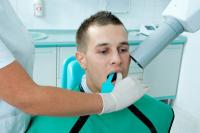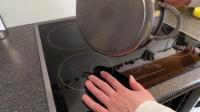VIDEO: How to use baker's yeast correctly
You can go wrong with using baker's yeast. Fresh yeast is the most sensitive. Even with dry yeast, there are a few rules to follow so that the dough also works as you imagine it.
How to use baker's yeast
- Always pay attention to the best before date. Overlaid yeast loses its buoyancy and the dough does not rise.
- The liquids to be used should never be hot, but lukewarm. Yeast is a fungus that dies at temperatures between 50 ° C and 60 ° C.
- Always dissolve fresh baker's yeast in a lukewarm liquid. To do this, crush the yeast and add it to the liquid. Stir until the baker's yeast has dissolved.
- Never add the salt directly to the dissolved yeast (if the recipe calls for it), but mix it well with the flour.
- Yeast dough rises best at a temperature of 37 ° C. So don't let the dough rise in a hot place.
- The warmer the environment in which the dough rests, the larger the air bubbles that are created during fermentation. Leave the yeast dough on overnight in the refrigerator go, you get a fine-pored dough.
- You can also dissolve dry yeast if the recipe calls for a pre-dough. To do this, take some of the liquid required in the recipe.
- Always knead the yeast dough well. Yeast dough should always have a soft but non-sticky consistency.
- The addition of fat delays the fermentation of the yeast, so if the fat content is higher than a third of the amount of flour, increase the amount of yeast.
- Sugar is considered the food for yeast. Always add some sugar or into the pre-dough honey. Egg yolks make yeast dough tender. The addition of egg white makes a yeast dough dry. Avoid too much protein in the dough.
- When kneading the yeast dough that has already risen, make sure that you do not knead it too much, otherwise you will knead out all the air bubbles.
Dry yeast and fresh yeast - differences
For a yeast cake or bread you can use fresh yeast or dry yeast ...



